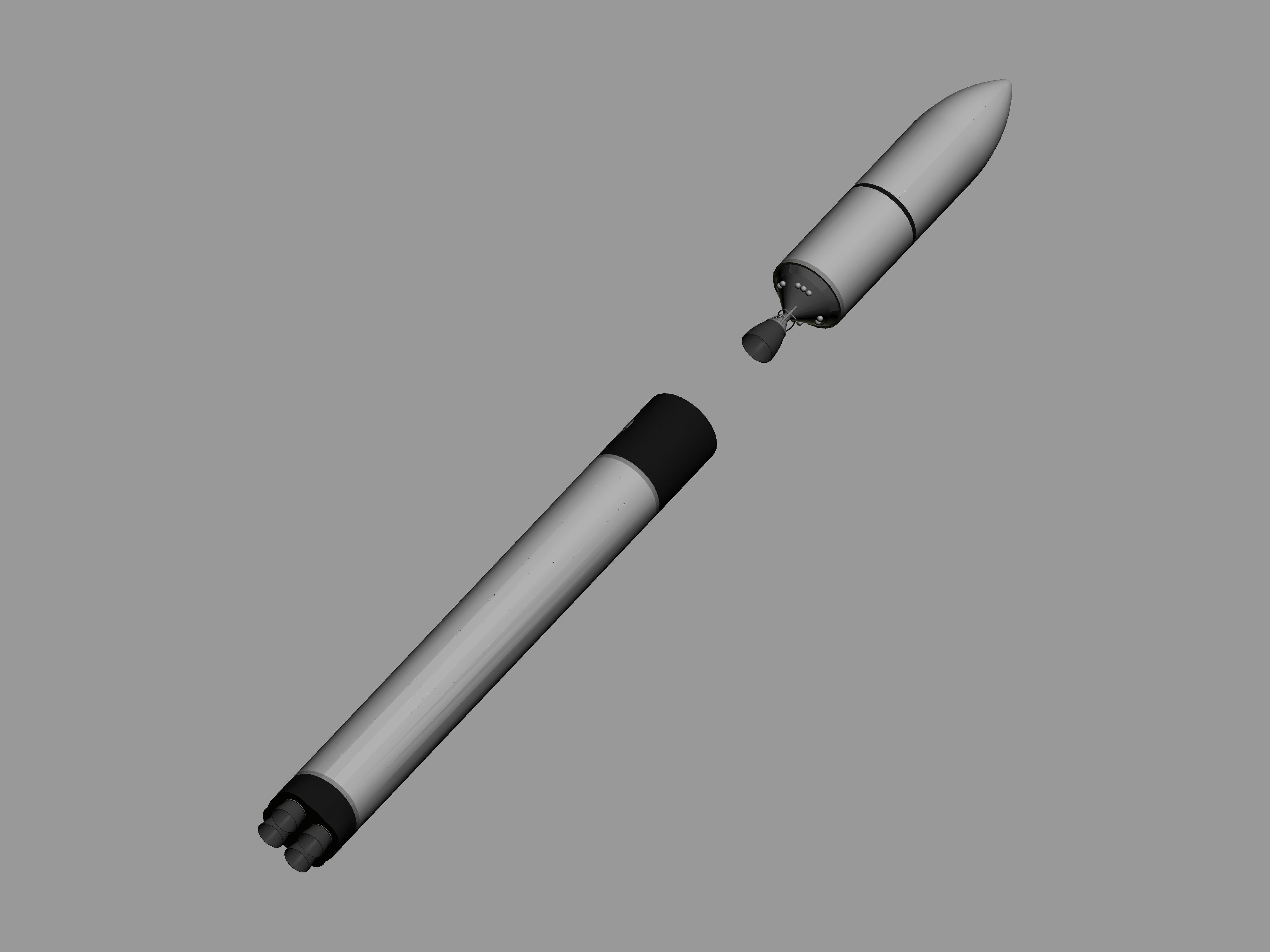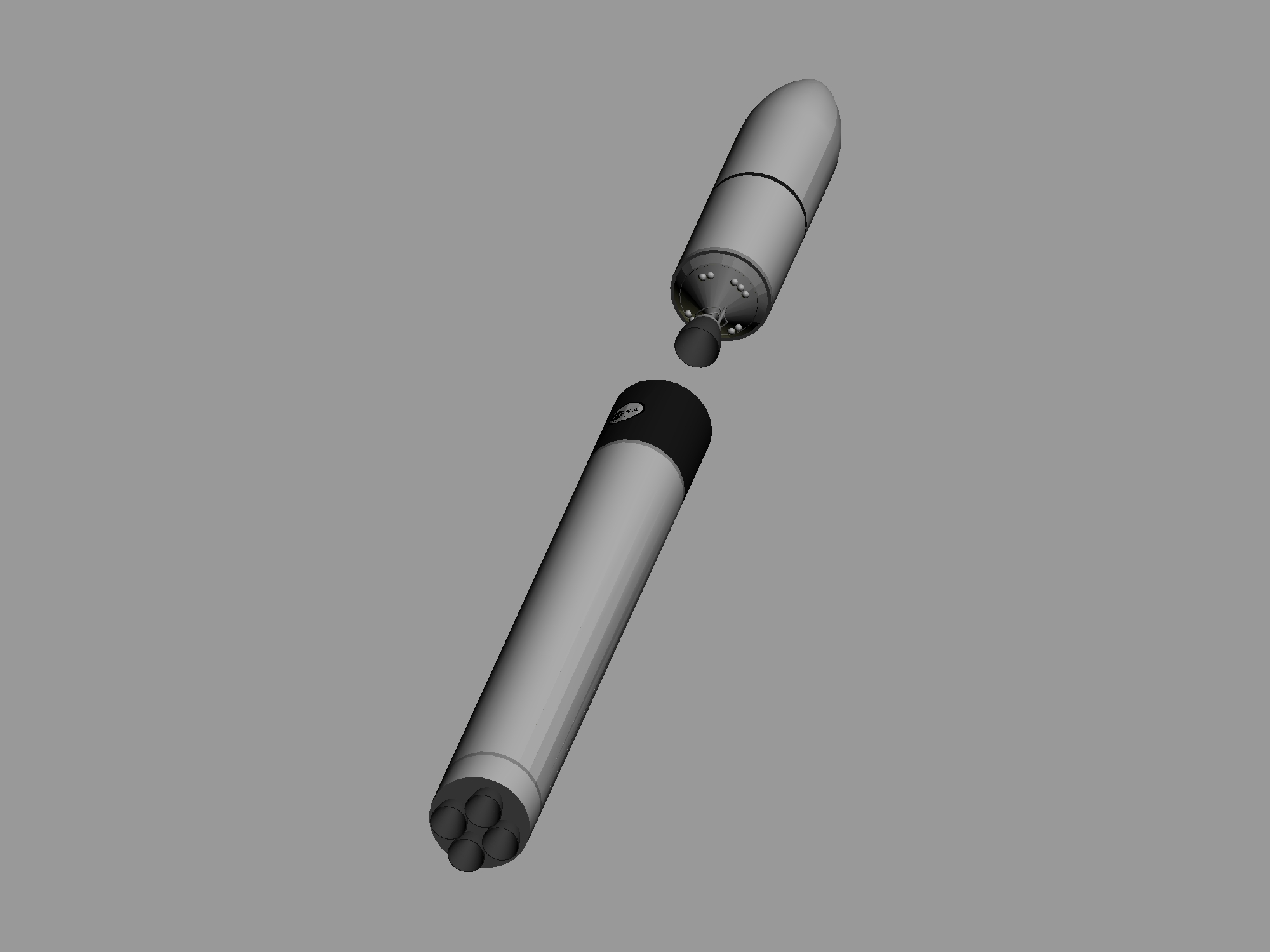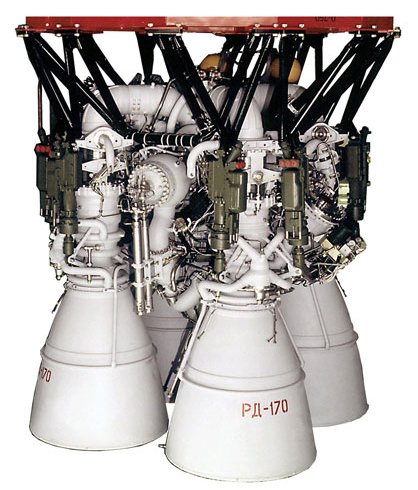ISProgram
SketchUp Orbinaut
As in, calculating the dry mass of a 5m rocket stage, like Atlas V Phase 2.
Previously, a technique for finding out the dry mass of the stage was to make my dry mass:fuel mass ratios similar to that of actual rocket stages.
However, I noticed two potential problems with this:
- to get a accurate/realistic result, you also have to mimic the mixture ratio of the fuel/oxidizer, since that determines propellant mass.
- if a analog stage does not exist, then you can't get a result.
The rocket I'm planning is 5.75m in diameter and is fueled by RP-1/LOX. There is no analog stage in existence to baseline a dry mass; the closest thing that could be found was the Atlas V Phase 2 proposals.
So I ended up using the Atlas CCB as a analog, and ended up with a dry mass of 65,300 kg - the hypothetical stage is virtually identical in size and width to the Delta IV CBC, which is only 26,400 kg. So I thought something was wrong.
So I did something new. I modeled a rough approximation of two analog stages and my hypothetical stage into SketchUp, measured their internal volume and divided that by that stage's dry mass for the analogs.
Using this "density" number, I then fed the information into the analog stage volume. I ended up with these results:
- Delta CBC analog gave my hypothetical stage a dry mass of 31,450 kg.
- Atlas V analog gave me a dry mass of 61,315 kg.
Now, since my hypothetical stage is based of the Atlas V Phase 2 proposal, I was tempted to go with the CBC analog, since that number looked the most realistic and because both the hypothetical stage and Phase 2 are based off/similar to the CBC and would be very similar. The result reflect this.
The problem is, the Atlas V analog is 61,315 kg, which fits rather closely to that of the previously 65,300 kg dry mass found using the ratio technique. So right now, either result appears to be valid in its own regard.
My question is, which dry mass would be better, with regards to realism? Or if you know a better way of calculating this kind of dry mass, how to do it? Help is appreciated!
I would also like to note that the fuel xidizer ratio, and the propellant mass in general, is constant ad doesn't change between the analogs.
xidizer ratio, and the propellant mass in general, is constant ad doesn't change between the analogs.
Previously, a technique for finding out the dry mass of the stage was to make my dry mass:fuel mass ratios similar to that of actual rocket stages.
All I do is make my dry mass:fuel mass ratios similar to real rocket stages. Astronautix is a good resource for rocket stage data.
However, I noticed two potential problems with this:
- to get a accurate/realistic result, you also have to mimic the mixture ratio of the fuel/oxidizer, since that determines propellant mass.
- if a analog stage does not exist, then you can't get a result.
The rocket I'm planning is 5.75m in diameter and is fueled by RP-1/LOX. There is no analog stage in existence to baseline a dry mass; the closest thing that could be found was the Atlas V Phase 2 proposals.
So I ended up using the Atlas CCB as a analog, and ended up with a dry mass of 65,300 kg - the hypothetical stage is virtually identical in size and width to the Delta IV CBC, which is only 26,400 kg. So I thought something was wrong.
So I did something new. I modeled a rough approximation of two analog stages and my hypothetical stage into SketchUp, measured their internal volume and divided that by that stage's dry mass for the analogs.
Using this "density" number, I then fed the information into the analog stage volume. I ended up with these results:
- Delta CBC analog gave my hypothetical stage a dry mass of 31,450 kg.
- Atlas V analog gave me a dry mass of 61,315 kg.
Now, since my hypothetical stage is based of the Atlas V Phase 2 proposal, I was tempted to go with the CBC analog, since that number looked the most realistic and because both the hypothetical stage and Phase 2 are based off/similar to the CBC and would be very similar. The result reflect this.
The problem is, the Atlas V analog is 61,315 kg, which fits rather closely to that of the previously 65,300 kg dry mass found using the ratio technique. So right now, either result appears to be valid in its own regard.
My question is, which dry mass would be better, with regards to realism? Or if you know a better way of calculating this kind of dry mass, how to do it? Help is appreciated!
I would also like to note that the fuel









